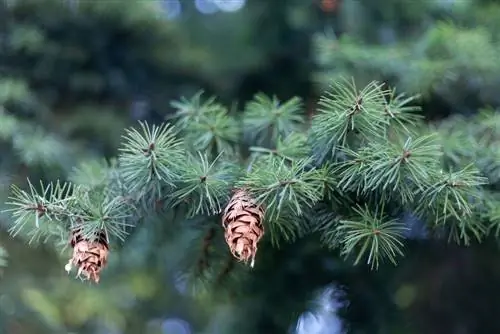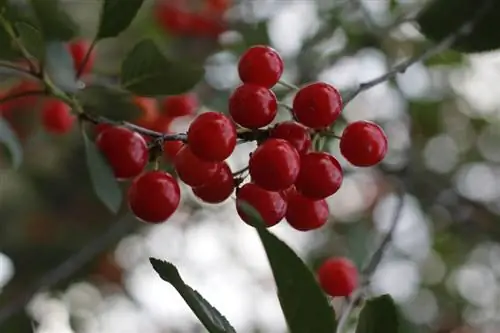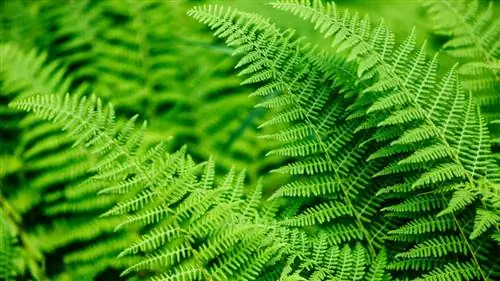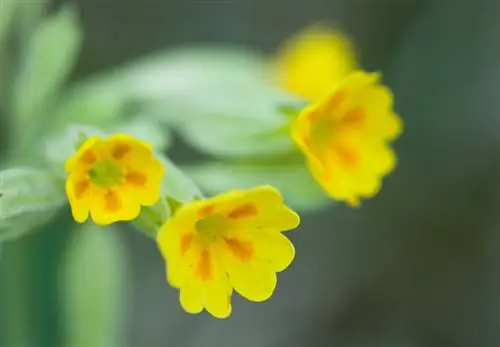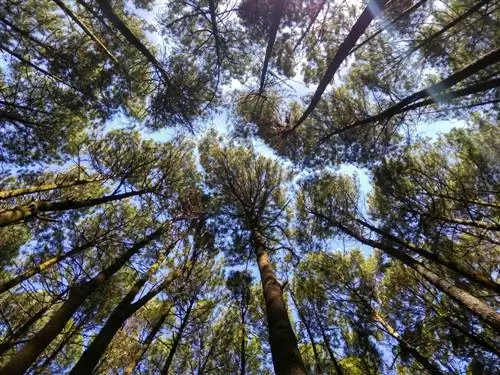- Author admin [email protected].
- Public 2023-12-16 16:46.
- Last modified 2025-01-23 11:21.
The Douglas fir is a large tree that retains its green needles even in winter. Hardly anyone knows more about this giant from another continent. It's exciting to delve into the description and draw comparisons with the local conifer species.
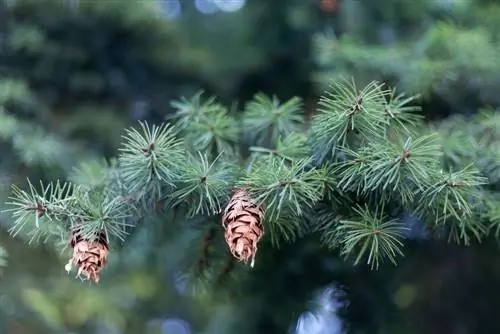
What does a Douglas fir look like and what conditions does it prefer?
The Douglas fir (Pseudotsuga menziesii) is an evergreen conifer that can grow up to 60 meters high. It has soft, blue-green needles that smell like lemon and grows best in nutrient-rich soil in sunny to partially shaded locations. Their cones are reddish-brown, spindle-shaped and about 10 cm long.
Names
The Douglas fir, which comes from the pine family, is known by the following names:
- German name: Douglas fir
- Botanical name: Pseudotsuga menziesii
- Common names: Douglas fir, Douglas spruce
The Scottish botanist David Douglas is the namesake of this tree. He brought them to Europe at the beginning of the 19th century.
Origin
The Douglas fir is native to the North American West. There it grows at higher altitudes, where it becomes much larger and older than here. Specimens that are over 800 years old have been spotted.
The Douglas fir has been present in Europe for around 200 years and is now one of the most commonly grown non-native tree species. In Germany their share of the tree population is 2%.
Some scientists suspect that Douglas fir was native to European soil before the Ice Age.
Growth and age
The Douglas fir is an evergreen conifer. It grows upright, forming a sprawling, conical crown with branches arranged in tiers.
- Growth height: in this country max. 60 meters
- Growth per year: approx. 40 cm
- Achievable age: more than 400 years
Douglas fir bark is smooth and gray when young. With age, a thick, reddish-brown bark with deep grooves forms.
Needles
- evergreen, soft and dull
- about 3 to 4 cm long
- light green when budding
- later blue-green
- leave directly from the branch
- smell intensely of lemon when crushed
Bloom
- Flowering begins between the ages of 15 and 40
- male flowers grow in groups, are yellow and approx. 1.5 cm long
- female flowers grow sporadically, are red and approx. 2 cm long
- Flowering time is April to May
Fruits and seeds
- red-brown cones, spindle-shaped
- Length: approx. 10 cm
- Diameter: approx. 3.5 cm
- fall from the tree when ripe (around September)
- the seeds are approx. 5-6 cm long, each with wings
Propagation
Douglas firs are propagated from seeds. However, propagation is demanding and lengthy. Seedlings (€34.00 on Amazon) are often purchased for planting in the home garden.
Location requirements
- sunny to partially shaded place
- sheltered from the wind
- loose, moist and nutrient-rich soil
The Douglas fir needs more and more space over the years and should therefore not be planted too close to buildings. The distance should correspond to their height.
Diseases and pests
Especially at a young age, up to around the age of 15, the Douglas fir is more susceptible to fungal diseases and pests. Some pests have followed it from its native homeland to Europe, but native species have now also discovered this tree for themselves.
- Rusty Douglas fir chute (ascomycete)
- Sooty Douglas fir (ascomycete)
- Root rot
- Douglas Mealybugs
- bark beetle
Usage
The wood of this coniferous tree species can be used in a variety of ways in construction and is therefore in high demand on the market. It is stable, durable and can be easily waterproofed.
Toxicity
The Douglas fir is not poisonous, quite the opposite:
- it has healing ingredients
- used in herbal medicine
- used for cosmetic production
- young shoots, flowers and seeds are edible

